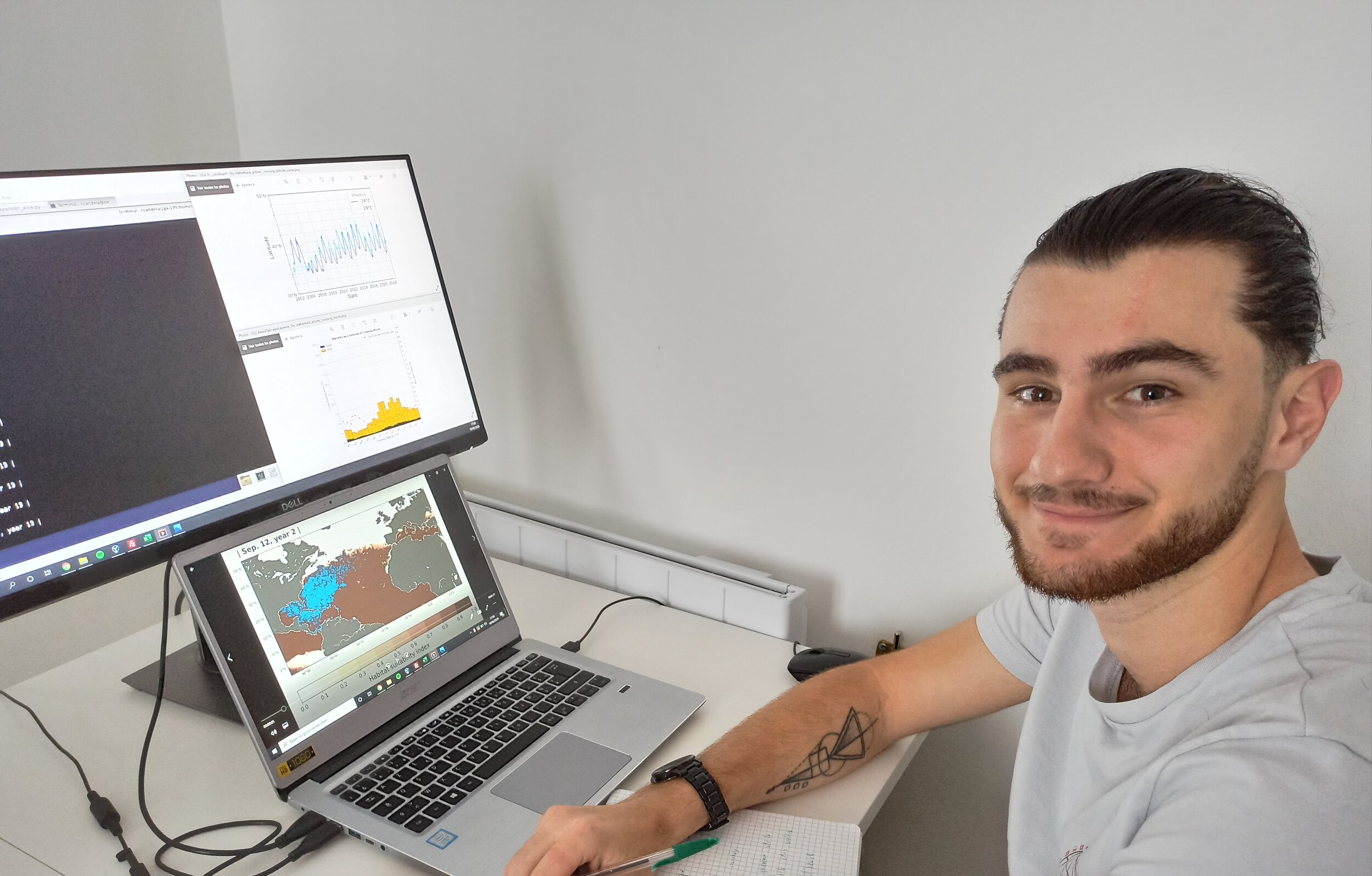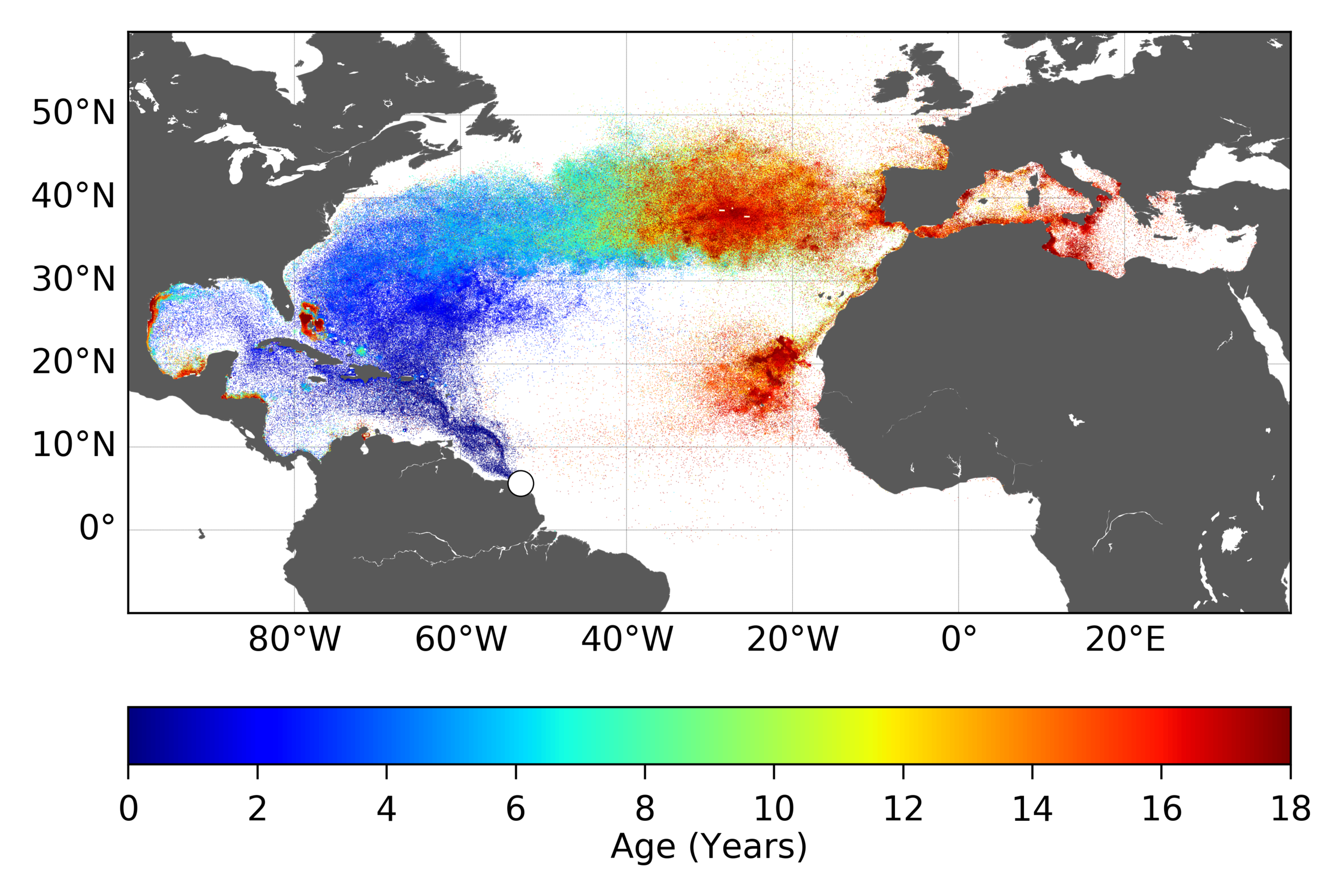Upwell researcher, Tony Candela, studies how oceanographic conditions influence juvenile leatherback dispersal patterns and mortality risk in the Northwest Atlantic. He works with a computer model that simulates the active dispersal of sea turtle juveniles away from natal beaches borne by oceanic currents and their own swimming movements. His research helps us to better understand how juvenile turtles use and move through ocean habitats. Tony has a Master’s Degree in Ocean Physics from the SeaTech School of Engineering at Toulon University in southern France. He currently lives in Toulouse, France.
When I talk about my job, people ask: “How can you help sea turtles from your office in Toulouse, a city far from the sea?” or “What does ocean physics have to do with sea turtle conservation? I would rather expect a biologist to work on such a subject.”
Tony Candela in his home office in Toulouse, France.
They are right–it seems strange–but to understand sea turtles, you must actually understand the environments in which they live. Leatherbacks are a highly migratory species and spend 99% of their lives at sea. Most of their movements are influenced by environmental factors; ocean currents impact their migrations, water temperature and primary production guide their search for food.
More information exists on adult sea turtle movements because they are large enough to carry satellite trackers, which are generally deployed when the females visit their nesting beaches. But hatchlings are generally too small to be equipped with satellite-trackers and juveniles are not easily found at sea. This is why Philippe Gaspar and Maxime Lalire (2017), developed STAMM (Sea Turtle Active Movement Model), a numerical model which aims to simulate the trajectories of sea turtle hatchlings and then juveniles across vast expanses of ocean from the time hatchlings first enter the ocean through their “lost years” as juveniles and sub-adults until the inception of their first reproductive migration as mature breeding turtles. Simulated juveniles move under the influence of ocean currents and their own active swimming motivated by the search for food and adequate water temperatures. The model incorporates environmental variables (currents, ocean temperature and productivity) from operational ocean circulation models developed by fellow ocean physicists.
Animated 18-year dispersal of 5000 simulated leatherback juveniles starting in 2002 from Awala-Yalimapo / Cayenne (French Guiana / Suriname). Their positions (blue dots) are displayed at 10-day intervals. Dots turn black when cold-induced mortality occurs and disappear after 3 months. The colored background represents the value of the habitat suitability index.
My recent work entails employing and further developing STAMM to simulate the dispersal of Northwest Atlantic juvenile leatherback turtles from various nesting beaches across the wider Caribbean. Analysis of the model simulations not only allows us to determine the dispersal pathways of these juveniles but also to examine the likely natural (e.g., temperature) or human-induced (e.g.., fisheries) mortality risks linked to the different patterns. Such analyses can help explain population changes associated with different nesting beaches. We can also communicate information on juvenile migration corridors and foraging areas to fishers and resource managers. Once fishers know where the risk of interactions is highest, they can avoid these areas or modify their fishing techniques.
Therefore, with my background in physics, I confirm that I can help sea turtles from my office by providing information about juvenile sea turtle movements that contribute to the implementation of effective conservation actions at sea. I am so thankful for that and I am really proud of being part of this adventure with Upwell.
Map of hatchling and juvenile dispersal over 18 years created by Tony Candela.



